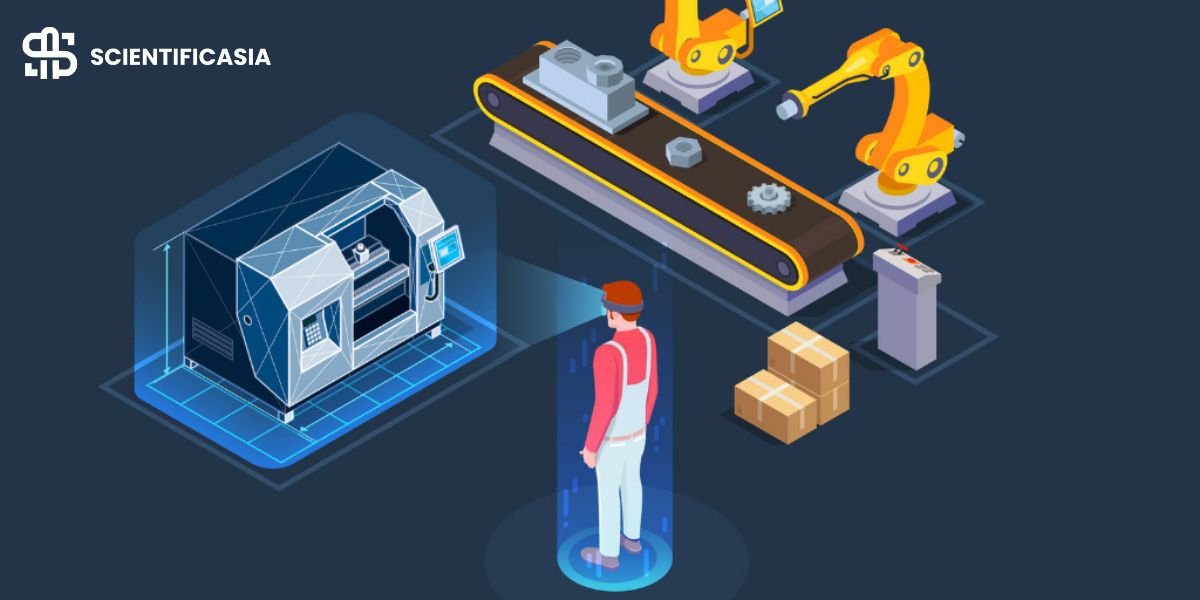Manufacturing is evolving faster than ever. Quality issues no longer need to be discovered after the fact. With AI in manufacturing for automation excellence, companies are now detecting problems before they occur.
What Is Predictive Quality Control?
Predictive quality control uses AI and machine learning to identify defects before they occur. Instead of relying on final inspections, these systems analyze data throughout the process. This means manufacturers can act early to prevent waste and downtime.
Sensors, cameras, and software continuously collect data on production. The AI models learn from this data to find patterns that lead to defects. Once a risk is identified, the system alerts operators or makes automatic adjustments.
This preemptive approach saves time, money, and resources. It also helps ensure consistent product quality across shifts, machines, and production runs. It’s a major step beyond traditional quality control.
Why Traditional Quality Checks Aren’t Enough
Manual inspection methods are slow and prone to human error. Inspectors can miss defects, especially during long shifts or when handling high volumes of work. That leads to faulty products being shipped or expensive rework.
Even automated checks that happen at the end of production may be too late. If a batch of products is already made, fixing the problem means starting over from scratch. That’s costly and inefficient.
Predictive systems address this by continuously monitoring quality in real-time. They can detect subtle shifts in equipment, material conditions, or operator inputs. That gives manufacturers a chance to respond before defects happen.
How AI And Machine Learning Make It Work
AI and machine learning are the engines behind predictive quality control. These technologies can analyze vast volumes of data faster than any human team. They learn what “normal” looks like and detect when something deviates from it.
The process starts by feeding historical data into machine learning models. Over time, these models recognize which data patterns result in good or bad outcomes. Once trained, they can monitor new data in real time.
When the system detects a sign of trouble, like a sensor reading that often precedes a defect, it issues a warning. In some cases, it can trigger automatic process changes. This is where AI in manufacturing truly demonstrates its power.
Benefits Of Going Predictive
One of the most significant benefits is the reduction of scrap and rework. By preventing defects rather than catching them later, predictive systems significantly reduce material waste. This is especially valuable in industries with tight tolerances or expensive materials.
Another major advantage is improved equipment performance. Predictive quality control often overlaps with predictive maintenance. The same data can signal both product issues and machine wear.
It also helps with workforce efficiency. Instead of chasing problems after they arise, operators can focus on optimization and prevention. It transforms quality control into a proactive and strategic function, rather than a last-minute check.
Real-Time Data And Smart Manufacturing Decisions
Access to real-time data is key. Modern factories are filled with sensors and IoT devices that constantly feed information to AI systems. This includes temperature, pressure, vibration, machine speed, and more.
When AI interprets this data, it delivers actionable insights. Managers can see trends before they become problems. They can compare performance across lines, shifts, or factories to identify areas for improvement.
This level of insight supports smarter decisions at every level. From operators to executives, everyone gets access to real-time information. That leads to faster problem-solving and stronger results.
Applications Across Industries
Predictive quality control isn’t just for high-tech factories. It’s already being used in the automotive, electronics, pharmaceutical, and food processing industries. Any industry that values consistency and speed can benefit.
In the automotive industry, predictive models help prevent safety-critical defects before the vehicle is assembled. In electronics, it ensures microcomponents are placed correctly and tested thoroughly. In food manufacturing, it monitors conditions such as temperature and cleanliness in real-time.
These systems are also adaptable. AI models can be retrained as new products are introduced or processes change. That flexibility makes them a long-term solution in fast-changing industries.
Building A Scalable Quality Strategy
Predictive quality control scales easily with production. As companies grow or expand to new locations, AI systems can be deployed across multiple sites. This creates a unified quality strategy that spans the entire business.
By using a central AI platform, manufacturers can compare defect rates, downtime, and performance in different factories. This allows for standardization, benchmarking, and cross-team learning. Everyone benefits from shared insights.
The result is a smarter, more scalable business. Companies that invest in predictive systems today are building the competitive advantage of tomorrow.
Conclusion
Predictive quality control is the future of smart manufacturing. With tools powered by AI in manufacturing for automation excellence, companies can prevent problems before they start. It’s a shift from reactive to proactive, from costly to efficient.
















